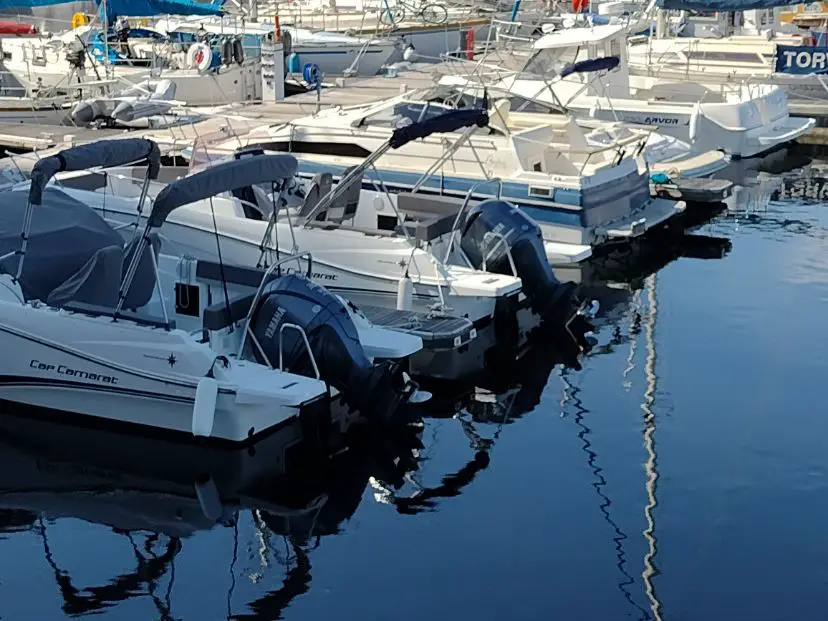Can an Outboard Motor Run Without a Battery?
Getting stuck with an outboard engine that won’t start or that plain struggles to get going will no doubt leaving you asking whether you can use an outboard without a battery, so here’s the answer in brief:
Outboard motors today can’t generally run without a battery although older models using a magneto as an independent power source may still be able. Modern outboards can’t run with a battery on a very low charge, either. The only exception is for old carbureted outboard engines, which can run but are rare.
Let’s see more about this in detail below given all the finer points to think about.
Modern Fuel Injection Outboard Motors Cannot Run Without a Battery
An outboard motor with a fuel injection engine cannot run without a battery as this is its only power source. Fuel injection engines are used in almost all outboards manufactured in the last 30+ years, meaning that they rely on a battery to run.
This is different to older outboard motors, which used a carbureted system, as explained below.
Carbureted (or ‘Carbed’) Outboard Engine vs Fuel Injection Outboard
Many older outboard motors used a carbureted system, a common type of engine which used a carburetor to draw fuel from the tank (in many engines, not just outboards), whereas most outboard engines made in the last 30 years use a fuel injection system.
Why Modern Outboard Engines Use Fuel Injection Systems over Carburetors
A fuel injection outboard engine has more efficient fuel consumption, cleaner and with greater responsiveness when in use, just as with any other fuel injection engine.
A carbureted outboard engine, although more responsive, is more prone to faults and does not run as cleanly as a fuel injection system. They are also older, meaning that they will need more maintenance in general given their extra years of use.
This means that carbureted outboard motors can run without a battery, but this is only helpful if in an emergency and should not really be relied upon.
With ‘carbed’ outboard engines also running without a battery, be sure to check for battery charge issues periodically since this could mask a problem.
You should also check that your outboard’s alternator is working properly as this may be the source of issues with your outboard’s battery.
Older Outboard Engines Also Had Magnetos
The older ‘carbed’ outboard engines also relied on magnetos. One problem with magnetos was that the contacts used in them added to wear, making the ignition system less effective, as per Skill Lync on YouTube (see video below).
Magnetos also need time for their coils to reach full charge, so this slowed down the overall response time of the system in an outboard engine, hence they were replaced by a newer, electronic ‘capcatitative discharge’ system, as explained in the video above.
How a Magneto Works in an Older ‘Carbed’ Outboard Motor
In earlier outboard motor models, magnetos were also used as a way to keep a constant supply of power independent of the engine.
A magneto is separate to an alternator and battery and is, in effect, its own independent power unit. The magneto is therefore not affected by a power shortage elsewhere, say with the battery.
For the above reason, modern airplanes still have magnetos as a fail-safe against any power issues, which would obviously be catastrophic if they failed while in use.
The video below gives an overview of a magneto in both a 1961 Johnson 2-Stroke Outboard and 1958 outboard engine.
How a Classic Outboard Engine’s Magneto Works
Following the points from Pilot Effect’s excellent magneto tutorial on YouTube, here are the key points on how magnetos work in general, as is the same in outboard engines:
- Rotor is a permanent magnet which is rotated by an engine drive gear
- The coil assembly contains:
- Iron core
- Primary coil, made of ~200 turns of heavy copper wire
- Secondary coil, made of ~20,000 turns of fine copper wire
- Important connections that the coil assembly has:
- Hot wire, leaving from the primary coil, going to ground
- High-voltage tab, leaving from the secondary coil, going to the spark plugs
- Rotor’s magnet in movement creates a fluctuating but continuously flowing current.
- The current in turn creates a powerful magnetic field in the iron core.
- When ignition is required, the grounding of the hot wire leaving primary coil is disconnected, stopping the flow of current
- From this disconnection, the magnetic field collapses suddenly, cutting across the secondary coil
- Induces a hugh voltage spike (20-30,000V) in the secondary coil.
- Voltage leaves the secondary coil through the high voltage tab, goes to the spark plug
- High voltage drives current across the gap in the spark plug, creating spark for ignition
- Disconnection of ground on hot wire from primary coil is achieved through breaker points
- Opening contacts, stops connection
- Distributor directs high voltage to spark plugs in proper sequence
You can also see a full video demo of an installation of a magneto on a ‘classic’ 1959 Evinrude outboard below from Old Johnny Rude on YouTube, again showing the age of the model.
Outboard Motor Charging System Diagnostic Points
If you want to get more in-depth on the charging system for your outboard, Boat Parts on YouTube has a great overview of how the charging system works to help diagnose issues or just to get to know your engine better.
My notes from watching the video are here, with the video below them – enjoy!
- They use an AC current
- Then to a separate unit, splitting the current to make sure battery gets the right charge
- Best to check it from time to time with a multimeter
- Be sure it has the right battery for your outboard since not all batteries are compatible with each motor






